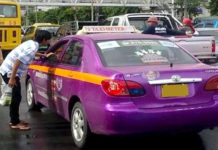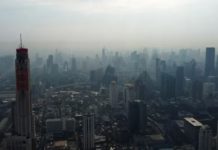#Bangkok’s massage parlours – a thin euphemism for commercial sex venues – are illegally pumping so much groundwater for bathing and rinsing that they are adding to the subsidence of the city at a rate of a centimetre each year, according to officials.
Former massage parlour mogul-turned-politician Chuwit Kamolvist said brothels resort to groundwater because of their massive water needs. Buying the water legally racks up enormous bills.
“Think of how much they have to pay for water? It’s a lot,” Mr Chuwit said on his Thairath television show.
“So they secretly use groundwater. They pump it up from 100 metres underground.”
And usually need about 1000 litres of water as each room is used on average three times a night.
Most major multi-storey parlours have about 100 rooms.
“That adds up to 300,000 litres of bathwater at each venue per night – enough to fill about three typical home swimming pools,” he said.
There are 120 officially registered massage parlours in Bangkok but the actual number is much higher, Mr Chuwit said.
Thai authorities cracked down on parlous illegally pumping groundwater a decade ago.

But Aranya Fuengsawat, deputy director general of the Department of Groundwater Resources, was quoted by Khaosod English saying the practice had returned.
Mr Chuwit added: “these places still use groundwater, many of them.”
A study commissioned by the Thai government in 2015 found Bangkok wasseriously endangered by rising sea levels, supporting doomsday warnings from academics and researchers, who say little action has been taken.
The study warned Bangkok risked being submerged in less than 15 years. Some areas of the city are already below sea levels.
Experts say decades of excessive groundwater pumping and rapid development are the main causes of the sinking.
They say clay on which the city sits needs to retain moisture, otherwise it dries out, becoming more susceptible to subsidence.
The city of eight million people was built on a low-lying flood-prone region.
It has almost 5000 tall buildings, nine million vehicles, roads and rail systems. Scores of high-rise developments are underway in a city-wide building frenzy.
Experts say the heavily concreted urban sprawl also prevents water seeping through to the right areas, causing devastating floods.
Bangkok was hit with one of the worst floods in its history in 2011. Parts of the city remained underwater for months and the Thai economy suffered losses estimated at $56 billion.
–
You can follow BangkokJack on Instagram, Twitter & Reddit. Or join the free mailing list (top right)
Please help us continue to bring the REAL NEWS – PayPal










































